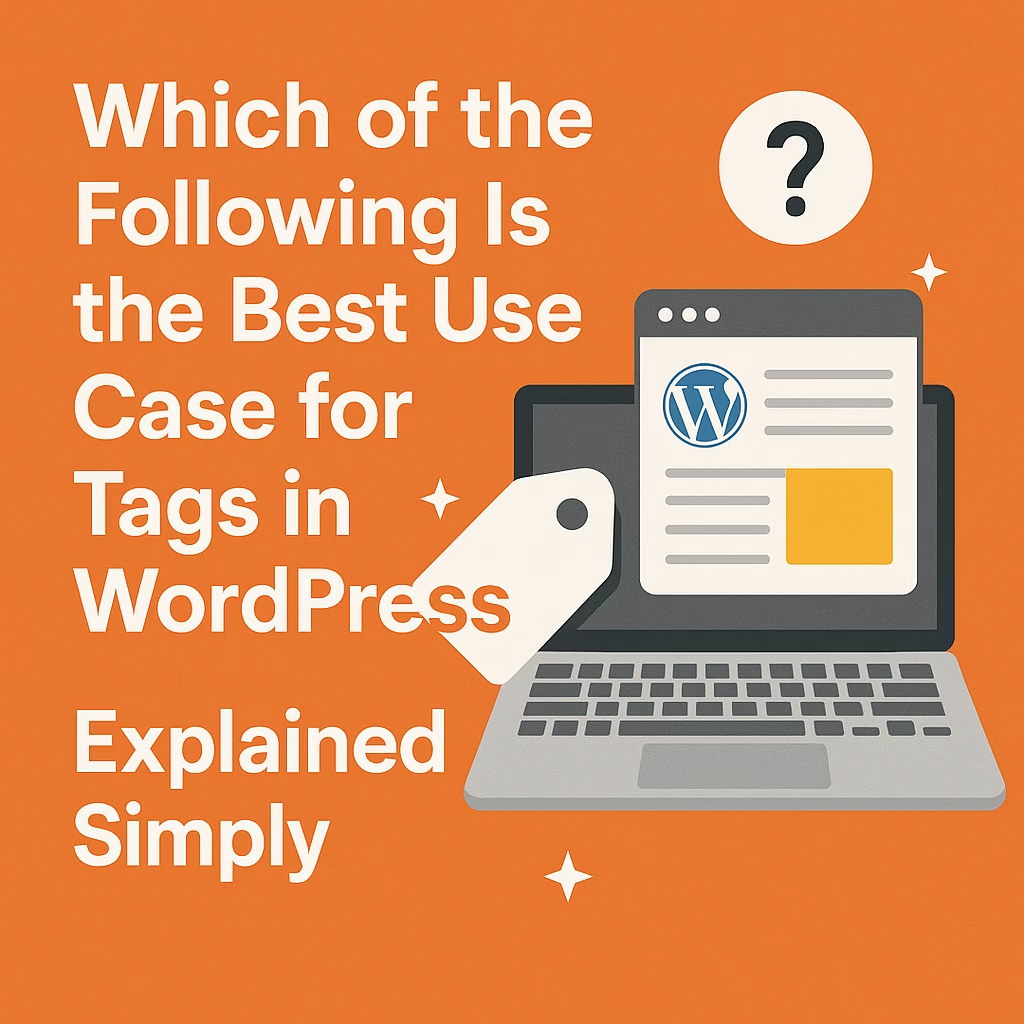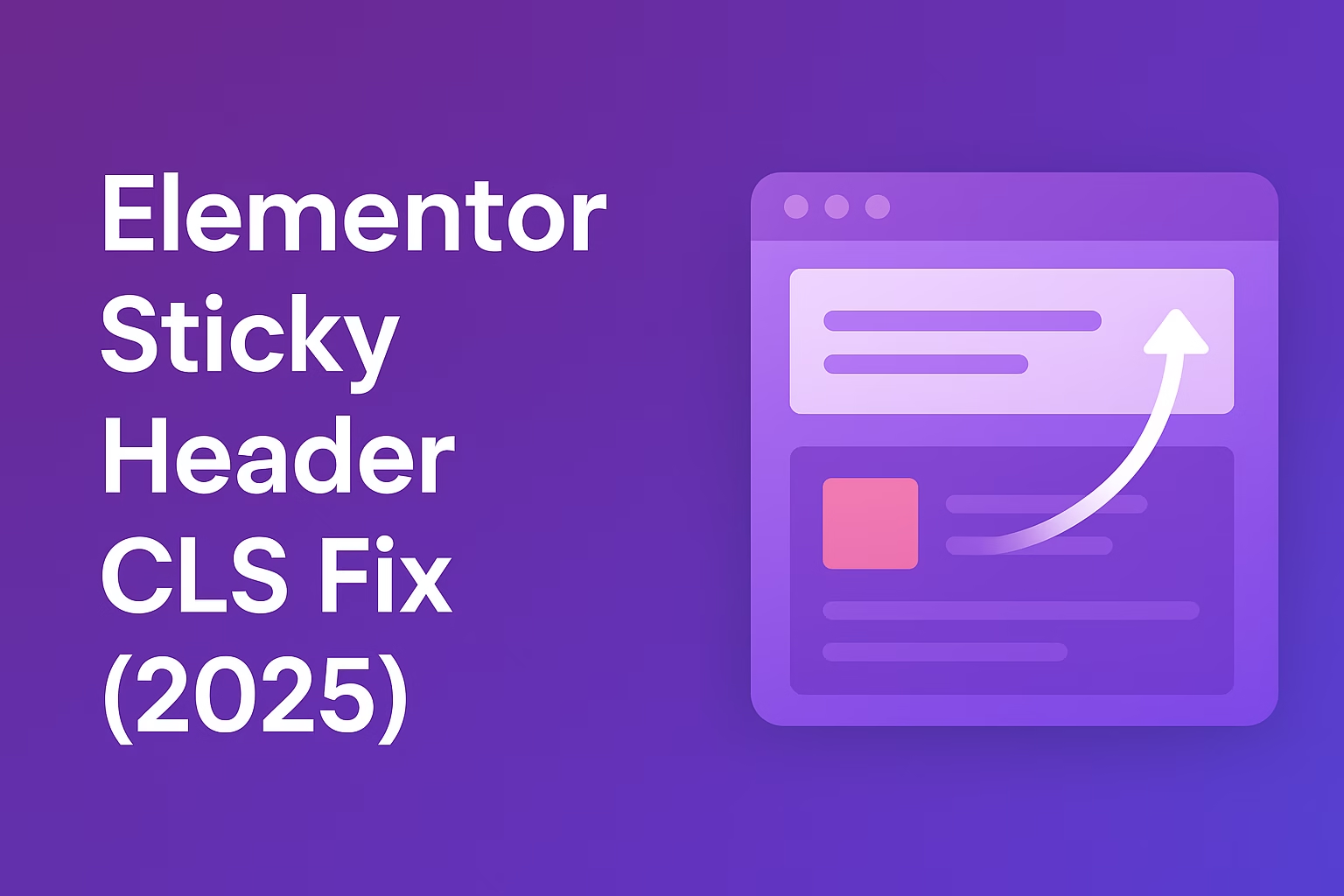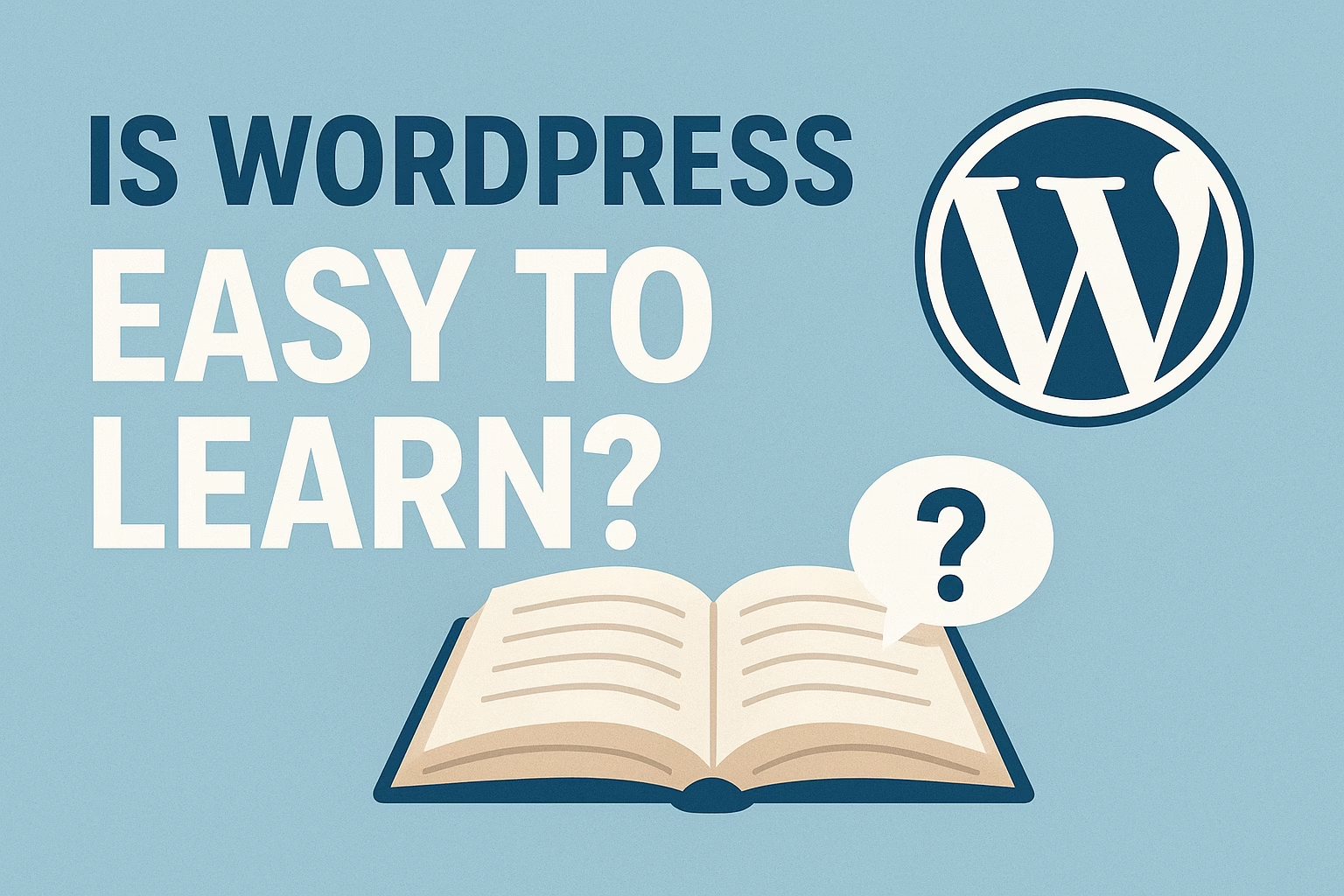Tags are used to group related posts based on specific topics or keywords. They help users find similar content quickly and improve internal site navigation.
If you’re wondering which of the following is the best use case for tags in WordPress?, you’re not alone. Tags are often misunderstood or misused, yet they play an important role in improving site navigation and content organization. In this blog post, we’ll explain the best practices for using tags, how they differ from categories, and why using them correctly can boost your SEO and user experience.
What Are Tags in WordPress and How Do They Work?
Tags in WordPress are a type of taxonomy that help group related posts together based on specific keywords or topics. Unlike categories, which are broad and hierarchical, tags are more specific and non-hierarchical. They make it easier for your visitors to find content related to a particular subject and improve the internal linking structure of your website. Using tags correctly can also benefit your SEO and user engagement.
Understanding WordPress Taxonomies
WordPress uses two main taxonomies: categories and tags. While categories group your posts into broad topics, tags are used for more specific identifiers. Learn more about WordPress taxonomies.
The Role of Tags in Site Structure
Tags are not required, but they can enhance your site structure by linking posts on similar subtopics. This allows readers to discover more content and increases time on site.
How Tags Improve User Experience
Well-implemented tags help users find related articles without manually browsing categories. This creates a smoother and more intuitive browsing experience.
Tags and SEO: Are They Worth It?
Tags can help with internal linking and indexation if used properly, but too many or irrelevant tags can hurt your SEO. Yoast explains tag SEO well.
Creating and Managing Tags in WordPress Admin
You can add tags directly when writing a post or manage them under Posts > Tags in the dashboard. This section includes tag names, slugs, and descriptions.
When Not to Use Tags in WordPress
Avoid using tags just for the sake of it. Repetitive, overly similar, or one-off tags create clutter rather than value. Focus on quality over quantity.
Tags vs Categories: What’s the Difference?
Tags and categories are both built-in taxonomies in WordPress, but they serve very different purposes. Categories are used to broadly group posts by topic, helping define the overall structure of your site. Tags, on the other hand, are used for labeling specific details or subtopics within posts. Understanding the difference between these two helps improve content discoverability, organization, and SEO. Misusing them can lead to a cluttered, confusing website.
What Are Categories in WordPress?
Categories are hierarchical and meant for grouping posts into broad sections. For example, a blog about tech might have categories like “Reviews,” “Tutorials,” and “News.”
👉 WordPress Support: Managing Categories
What Are Tags in WordPress?
Tags are non-hierarchical labels that help identify specific topics or elements within a post. For example, a post under “Reviews” might have tags like “iPhone,” “Camera,” or “Battery Life.”
👉 WordPress Codex: Tags
Hierarchy: The Key Difference Between Tags and Categories
Categories can have subcategories (e.g., “Tech > Mobile”), while tags are flat with no parent-child relationships. This difference plays a big role in how your site is structured.
SEO Implications: Tags vs Categories
While both can impact SEO, categories are usually indexed and appear in breadcrumbs, giving them more weight in site structure. Tags are more about internal linking.
👉 Yoast: SEO Best Practices for Tags and Categories
When to Use a Category vs a Tag
Use categories to organize main topics of your site. Use tags to highlight keywords or related themes within each post. Think of categories as folders and tags as labels.
Can You Use Both Together?
Absolutely! Using both strategically allows for better content filtering, user navigation, and SEO. Just avoid duplicating names across both taxonomies to prevent confusion.
Why Tags Matter for SEO and User Navigation
Tags in WordPress play an underrated role in both SEO and user experience. When used correctly, they help search engines understand content relationships and improve internal linking. For users, tags offer a faster way to explore related posts without relying on broad categories. However, misuse of tags—like keyword stuffing or excessive tagging—can lead to SEO penalties and a confusing site structure. This section explores how to strike the right balance.
Internal Linking and Crawlability Benefits
Tags create archive pages that link related posts, which helps search engine bots crawl your site more efficiently. These internal links boost SEO by connecting relevant content.
👉 Google Search Central: Organizing Site Structure
Enhanced User Engagement Through Tag Navigation
Tags act as quick-access filters for users who want to read more on a specific topic. This increases time on site and reduces bounce rate—two positive engagement signals for SEO.
Tag Archive Pages: A Double-Edged Sword
Each tag automatically generates an archive page. If managed well, this improves discoverability. If misused (e.g., with duplicate or thin content), it can hurt your SEO.
👉 Ahrefs Blog: Tags and SEO
Tags vs Keywords: Don’t Confuse the Two
Tags are not SEO keywords—they are content labels. Adding SEO keywords as tags won’t improve rankings unless the tags are tied to meaningful, relevant archives.
How Tags Improve Site Structure and Topic Clustering
Tags can serve as micro-topic clusters within your content, showing search engines how your content is interrelated—an increasingly important SEO strategy.
Best Practices to Make Tags SEO-Friendly
Limit the number of tags per post, avoid duplicates, and ensure each tag has multiple posts associated with it. Also, avoid indexing low-quality tag archives using an SEO plugin.
👉 Yoast SEO: Managing Tags
Common Misconceptions About Using Tag
Many WordPress users misunderstand how tags work, often leading to cluttered sites and poor SEO performance. From thinking tags boost rankings by themselves to using too many or irrelevant ones, these misconceptions can do more harm than good. This section clears up the most common myths about using tags and explains what you should do instead.
Myth: More Tags Means Better SEO
Many believe that the more tags you add, the better your post will rank. In reality, excessive tagging dilutes your content’s relevance and can result in thin or duplicate archive pages, hurting your SEO.
Myth: Tags Are Just Another Place for Keywords
Some users treat tags like keyword stuffing zones, but tags are meant for content organization—not search engine ranking. Tags should describe what the post is about, not mimic SEO keywords.
Myth: You Don’t Need to Manage Tags After Adding Them
People often assume once a tag is added, it’s set and forget. However, regular tag maintenance is essential to avoid orphaned tags (used only once) or inconsistent labeling across posts.
Myth: Tags Replace Categories
Tags and categories are not interchangeable. Categories define the structure of your site; tags fine-tune the content connections. Relying solely on tags makes navigation and hierarchy unclear.
Which of the Following Is the Best Use Case for Tags in WordPress?
This is the core question many WordPress users ask: Which of the following is the best use case for tags in WordPress? Tags are most effective when used to group related content around specific subtopics, helping users discover more of your content and aiding search engines in understanding topic relationships. Below, we explore the best use cases—what works, what doesn’t, and how to get the most out of WordPress tags.
Connecting Posts with Similar Microtopics
The best use case for tags is to link posts that share a specific detail or subtopic, such as multiple recipes with “gluten-free” or articles featuring “remote work tips.” This improves discoverability for niche interests.
Enhancing Internal Linking Through Tag Archives
When used consistently, tags automatically generate archive pages that function like mini content hubs. These internal links improve site structure and help visitors find related posts easily.
Supporting Topic Clusters and Content Silos
Tags can support an SEO strategy by grouping content within a topic cluster. For example, all “email marketing” posts can be tagged and linked together as a content silo to strengthen topical authority.
Filtering Content for Better User Experience
Tags allow users to filter content by very specific interests without navigating through broad categories. For example, on a travel blog, a user might browse all posts tagged “Italy.”
Improving Site Search and Navigation
Tags act as metadata that can be indexed by internal search tools, helping users surface more targeted content results when searching your site.
Powering Related Post Widgets
Many themes and plugins use tags to generate related post suggestions. When applied properly, this increases time-on-site and encourages deeper content exploration.
Organizing Evergreen vs. Timely Content
Tags can be used to distinguish evergreen content from trending or seasonal posts. For example, a blog post tagged “2025 trends” versus one tagged “beginner tips.”
Segmenting Content for Targeted Audiences
If you have multiple audience types, tags can help segment content by interest—like tagging posts “freelancers,” “agencies,” or “small businesses” to help readers find what’s most relevant to them.
Best Practices for Using Tags Effectively on Your WordPress Site
Using tags the right way can enhance both user experience and search engine visibility. But too often, tags are misused—either overused, duplicated, or left unmanaged. To truly benefit from tags in WordPress, it’s essential to follow a set of clear, strategic practices. This section covers proven methods to keep your tags meaningful, relevant, and SEO-friendly.
Limit the Number of Tags Per Post
Avoid overloading each post with a long list of tags. Instead, use 3–5 well-targeted tags that are directly relevant to the post’s content. This keeps your tag archives focused and valuable.
Ensure Each Tag Groups Multiple Posts
Every tag you create should be used on more than one post. Tags with only one post result in orphaned archives and offer no real navigational or SEO benefit.
Avoid Duplicate or Similar Tags
Keep your tag vocabulary clean and consistent. Avoid using variations like “Marketing Tips” and “Tips on Marketing” separately. Choose one format and stick to it to prevent fragmentation.
Regularly Audit and Clean Up Tags
Over time, your tag list can grow bloated. Perform regular audits to merge similar tags, delete unused ones, and refine tag usage across your content for clarity and efficiency.
Use SEO Plugins to Manage Tag Indexing
Tools like Yoast SEO or Rank Math allow you to control whether tag archives are indexed by search engines. If a tag isn’t adding SEO value, consider noindexing it to avoid content dilution.
Final Thoughts
Tags in WordPress are more than just optional labels—they’re a powerful tool when used strategically. From improving user navigation to supporting SEO through better site structure and internal linking, tags can significantly enhance the performance and usability of your website. However, the key lies in thoughtful implementation: use a limited number of relevant tags, avoid duplication, and consistently maintain your tag library.
Misusing or ignoring tags can clutter your site, confuse visitors, and even harm your rankings. On the other hand, when applied correctly, tags help you organize content, guide users to related articles, and signal topical relevance to search engines.
Whether you’re running a personal blog, a business site, or a content-heavy platform, understanding and applying the best practices for WordPress tags can give your content the clarity and visibility it deserves.
Need help rebuilding your layout? Contact me and I’ll help you get your site back on track.




